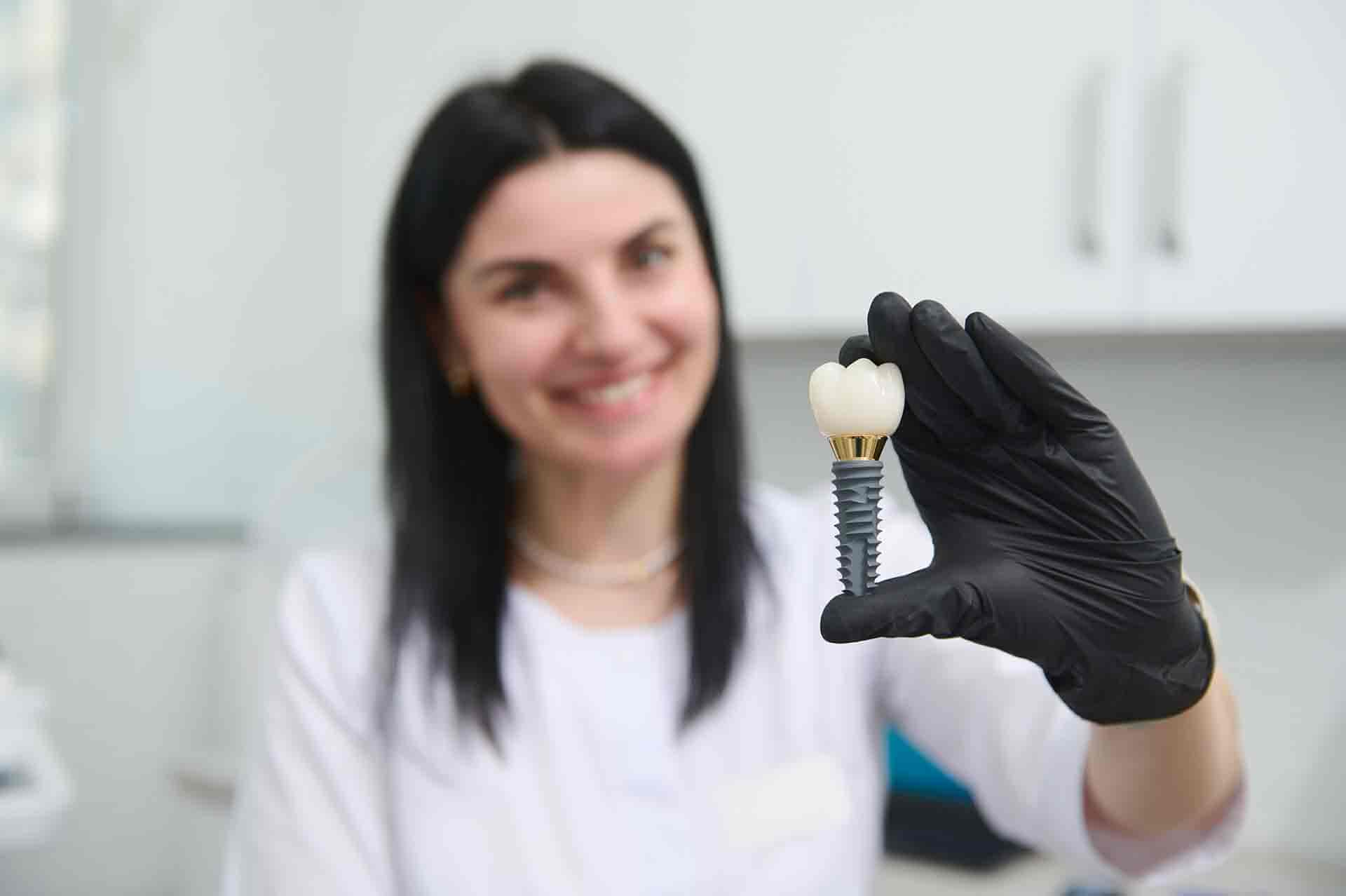Dental Inlays vs. Crowns: Which Dental Restoration is Right for You?
June 2024
Let's face it, nobody enjoys a chipped tooth. It can be a pain (literally!), throw off your smile game, and make you feel like a popcorn kernel waiting to happen. But don’t worry, my friend! Modern dentistry offers two fantastic options for restoring your pearly whites to their former glory: dental inlays and crowns. Now, the question becomes - inlays vs. crowns, which one is the knight in shining armor for your chompers? Let’s understand the differences between the two.
Inlay Intervention: Preserving Your Tooth with Strength
Dental Inlays
Dental inlays, sometimes referred to as partial crowns, are custom-made dental restorations designed to fit precisely within the cusp (pointed chewing surface) of a tooth. They are typically used for moderate damage that's too extensive for a standard filling but doesn't require covering the entire tooth structure. Inlays are incredibly strong and durable, often made from porcelain or gold, and can closely resemble the natural color of your teeth.
Dental Onlays
Onlays are similar to inlays but cover a larger portion of the tooth, including one or more cusps. They are ideal for situations where the damage is more substantial but doesn't warrant a full crown.
Both inlays and onlays are incredibly strong and durable, often made from porcelain or gold. They closely resemble the natural color of your teeth, offering a seamless restoration. Here's where inlays/onlays shine:
- Preserving Tooth Structure: Unlike crowns, inlays/onlays require minimal removal of healthy tooth structure, allowing you to retain more of your natural tooth.
- Durability and Strength: Made from long-lasting materials, inlays/onlays can withstand years of wear and tear, offering a reliable solution for moderate damage.
- Natural Appearance: The custom-crafted inlays/onlays blend seamlessly with your surrounding teeth, maintaining a natural-looking smile.
Crowning Glory: When a Total Tooth Makeover is Needed
Dental crowns, also known as caps, are the ultimate solution for severely compromised teeth. Imagine a superhero suit for your tooth - that's what a crown does!
The Mighty Crown: Materials, Benefits, and Applications
Crowns are custom-made tooth-shaped restorations that completely encase the entire visible portion of your tooth above the gum line. They're crafted from durable composite materials like porcelain fused to metal, all-ceramic, or gold, ensuring they can withstand years of chewing and wear.
But crowns aren't just about strength. They offer a multitude of benefits:
- Restoring Functionality: Severely damaged or cracked teeth can become weak and painful. Crowns reinforce the tooth structure, allowing you to bite and chew comfortably without fear of breakage.
- Preserving the Tooth: Crowns act as a protective barrier, preventing further damage and potential tooth loss.
- Enhanced Aesthetics: Cracked, chipped, or discolored teeth can detract from your smile. Crowns can be crafted to perfectly match the color and shape of your surrounding teeth, giving you a natural-looking, beautiful smile.
- Root Canal Rescue: Following a root canal, the tooth becomes more brittle. Crowns provide much-needed support and protection for these weakened teeth.
The Great Inlay vs. Crown Showdown
Now comes the big question: inlays/onlays vs. crowns, which one is right for you? Here's a breakdown of two key factors to consider:
Inlay vs Crown: Cost
Generally, inlays/onlays are slightly less expensive than crowns due to requiring less tooth removal and using less material. However, the exact cost can vary depending on the complexity of the procedure and the materials used.
Onlay vs Crown: Longevity
Both inlays/onlays and crowns are known for their exceptional durability, often lasting for 10-15 years or even longer with proper care. However, crowns may offer slightly better longevity due to their complete coverage of the tooth structure.
Onlay vs Crown After Root Canal?
After a root canal, the tooth becomes more susceptible to breakage. Inlays, onlays, and crowns can be used for protection. Here's a breakdown to help you decide:
- Inlays/Onlays: If there's sufficient remaining healthy tooth structure, inlays/onlays can provide adequate protection and restore functionality.
- Crowns: If the damage is more substantial, affecting a larger portion of the tooth or weakening the sides, a crown is the recommended choice for maximum protection and stability.
Still not sure which one is better? Let us help you!
Smile SOS Solved! Get Your Inlay or Crown Consultation at Raio Dental
Ultimately, the best way to determine whether inlays/onlays or crowns are right for you is to consult with a qualified dentist at Raio Dental.
A chipped or damaged tooth can not only affect your smile but also impact your ability to eat comfortably. Raio Dental in New York City is here to help! Our experienced dentists offer state-of-the-art technology and compassionate care to ensure a comfortable and successful restoration procedure.
Schedule a consultation with Raio Dental today! Visit our website Raio Dental and contact us to discuss your options for restoring your smile with dental inlays, onlays, or crowns. Take charge of your oral health and regain the confidence of a bright, beautiful smile!

Is Teeth Whitening Permanent?
A bright, white smile can boost confidence and transform your appearance but one common question patients often ask is, “is teeth whitening permanent?”. The truth is that while teeth whitening ...
All-on-X Implants vs. Traditional Dentures: Pros and Cons
October 2025When considering tooth replacement options, many patients wonder about All-on-X Implants vs. Traditional Dentures: Pros and Cons. Both solutions can restore a full arch of teeth, improve oral health, and ...
Maintenance & Aftercare of All-on-X Implants
October 2025Maintenance & Aftercare of All-on-X Implants is essential to ensure the long-term success of your full-arch dental restoration. All-on-X implants offer a stable, durable solution for patients missing multiple teeth, ...
Can a Night Guard Help With Snoring?
September 2025Snoring is a common issue that affects both the person snoring and their sleep partner. For some, it's just a minor nuisance, but for others, it can signal an underlying ...
How to Reduce Swelling After Oral Surgery
September 2025Swelling is one of the most common side effects after oral surgery. Whether you've had your wisdom teeth removed, a tooth extraction, or another procedure, swelling is part of the ...
Can TMJ Cause Dizziness? Understanding the Link Between Jaw Disorders and Balance
August 2025Do you ever feel lightheaded for no clear reason? Struggle with sudden dizziness when standing up or turning your head? Feel off-balance even when everything else seems normal? These symptoms ...
Can Orthodontics Improve a Misaligned Jaw?
September 2025Did you know? A misaligned jaw can cause chronic headaches, ear pain, difficulty chewing, and even lead to temporomandibular joint (TMJ) disorders. Most people think orthodontics is only for straightening ...
What Happens If You Drink Alcohol After Fluoride Treatment?
June 2025Did you know fluoride treatments can reduce tooth decay by nearly 25%? That's why many people include it in their regular dental visits. But once the treatment is done, you ...
Traditional Dentures vs Implant Supported Dentures: Which One is Right for You?
May 2025Did you know? Nearly 41 million Americans wear dentures, but studies show that people with implant-supported dentures report significantly higher satisfaction—especially when it comes to comfort, eating, and speaking. (Source: Journal of ...
Porcelain vs Composite Fillings: A Dentist’s Guide to Choosing the Best Option
March 2025If you've ever had a cavity, you know how important dental fillings are in restoring your smile and protecting your teeth. However, when it comes to choosing the right filling ...
Are Dental Implants Considered Cosmetic or Necessary for Oral Health?
February 2025If you're missing a tooth, you've probably wondered: Are dental implants considered cosmetic, or are they essential for oral health? It’s a common question, especially since many insurance companies classify ...
























